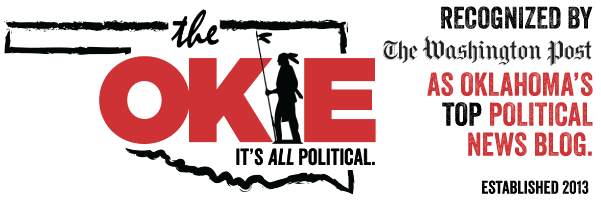For Doerflinger, new budget is best chance for real reform
Oklahoma finance secretary: Performance needs to be emphasized in state budget
By Preston Doerflinger
January 27, 2013
The next state budget, my third as state finance secretary, will be my first as lead budget negotiator for Gov. Mary Fallin. I assume this responsibility pledging my best to every taxpayer whose resources we are entrusted to manage.
Short term, we’re proud that the proposed budget the governor sends the Legislature next month meets my goal to avoid bad budgeting habits, like quirky accounting and convoluted fund transfers, that typically fail the smell test. State budgets are notorious for tricks, but this proposal has none. It’s transparent, funded and balanced — no gimmicks. I’m optimistic the Legislature will also embrace this smarter, simpler approach.
Bigger picture, I see this as an opportunity to help the state embrace performance-based budgeting — a fiscal philosophy that allocates funds based on data-driven projections of measurable spending results. It gets more bang for the taxpayers’ buck.
All budget builders — especially those of us managing taxpayer money — should consistently evaluate organizational needs and measure performance. Sadly, the state rarely follows these basic principles. Instead, it seems endlessly fixated on a deranged annual dance of cumbersome processes and arbitrary figure-chasing, limiting officials to appropriations that are sloppy, at best.
Budget officials shouldn’t operate like farmhands filling the herd’s trough. We should be more like dieticians, constantly analyzing every agency’s overall wellness and needs to determine the best regimen for success.
Officials are already considering how to spend the $7 billion in state funds available next fiscal year. Many decisions will undoubtedly be based on what was spent last year, and what is reportedly needed next year.
But who says every penny must be spent? Who says last year’s baseline should be the unquestioned alpha for establishing next year’s appropriation? And how are “needs” determined, and by whom?
When I ask these questions, I’m usually told: “We’ve always done it this way.” That’s a sad answer. Businesses would never operate so capriciously, yet it’s standard at the Capitol, where the budget is typically developed and evaluated based solely on whatever it was last year.
“Is it 3 percent more?”
“Five percent less?”
“Flat?”
“Spending shrunk! That’s bad! Or is it good?”
Numbers and pontification abound, yet there’s rarely any deliberative discussion of performance, or what these numbers actually do and mean. Performance-based budgeting would change that. It shifts the conversation from raw numbers to detailed outcomes so policymakers can budget for results instead of just chasing arbitrary figures. It encourages innovation instead of merely maintaining status quo.
The Office of Management and Enterprise Services already uses it to manage state agency insurance costs by consistently measuring insurance policy performance to set spending levels, enabling $25 million in savings over the past eight years. Expanding this philosophy statewide would reinvent the entire budget ritual for the better.
Granted, Oklahoma can’t change overnight; it’ll take time to reach our light bulb moment. But we can and will get there under Thomas Edison’s belief that in all things, “There’s a way to do it better — find it.”
Doerflinger is the governor’s Cabinet secretary of finance and revenue and director of the Office of Management and Enterprise Services.
source: www.newsok.com

